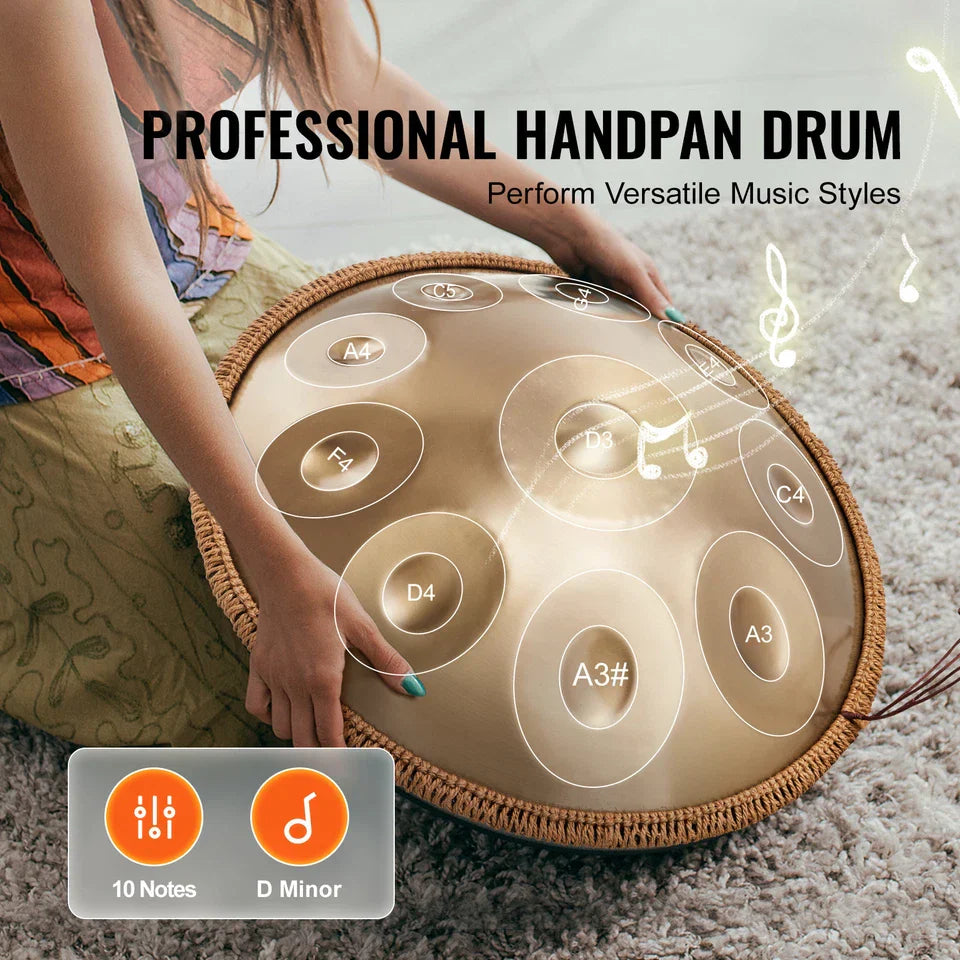How to Play a Handpan? A Beginner's Guide to Mastering This Magical Instrument

The handpan, with its mesmerizing, otherworldly sound, has captivated audiences around the globe. This beautiful instrument, which resembles a UFO or a wok, can seem intimidating, but the truth is it's one of the most intuitive and accessible instruments you can learn.
You don't need any prior musical experience or knowledge of music theory to start making beautiful, harmonious melodies. This guide will walk you through the essential steps to begin your handpan journey.
The First Thing You Need to Know: There Are No Wrong Notes
The magic of the handpan lies in its pre-tuned scale. Each note on the drum is carefully hammered and tuned by a master artisan to belong to a specific musical scale, such as D minor or C major. This means that no matter which notes you strike, and in what order, they will always sound in perfect harmony with each other.
This single feature removes the biggest fear for any beginner and allows you to focus purely on exploring sound and rhythm.
The Core Technique: It's All in the Touch
Unlike a drum kit or a steel tongue drum, the handpan is primarily played with your hands, not with mallets. Mastering the correct touch is the key to producing a clear, ringing tone.
-
Use Your Fingertips: The best sound comes from a precise, quick tap using the fleshy pad of your finger (not the tip or nail). Use a light and controlled motion.
-
Bounce Off Quickly: Imagine your finger is touching a hot stovetop. You need to pull it away immediately after contact. The sound is produced by the quick impact and the instant release. If you leave your finger on the note, you will mute the sound.
Your First Steps to Playing: From Exploration to Improvisation
You don't need a music sheet to begin. The best way to learn is by simply playing.
-
Step 1: Get to Know Your Instrument: Start by tapping each note one by one, listening to its unique tone and feeling the vibration. Explore the notes and get a feel for the instrument.
-
Step 2: Find a Simple Rhythm: Begin by establishing a basic rhythm on a single note, such as a steady "tap, tap, tap." Once you're comfortable, try adding another note to your rhythm.
-
Step 3: Begin to Improvise: Now, simply play. Let your hands roam freely across the notes. Experiment with different rhythms and note combinations. The pre-tuned scale will ensure everything you play sounds beautiful and musical.